In 2019, SCRT installed three floating islands in Elterwater as part of our ongoing Elterwater remediation project.
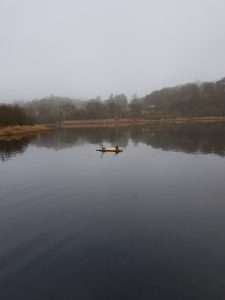
Elterwater is a Special Site of Scientific Interest (SSSI), formed from three connected basins (inner, middle and outer basin) and fed by Great Langdale Beck and Little Langdale Beck. Situated just outside the small village of Elterwater in the Langdale Valley, Elterwater has been badly affected by historical pollution. SCRT have been working to improve the water quality of Elterwater for a number of years, including the installation of a pipeline to increase flow to Elterwater and a beck reconnection project.
As part of these projects we aim to improve habitats for the wildlife that call Elterwater its home. We installed 3 islands on the outer basin of Elterwater, to provide nesting habitat for species such as Great Crested Grebes. However, the floating platforms needed some much needed TLC since their installation, so we went back in March 2022 to update them.
Funded by the European Rural Development fund, this task formed part of multiple deliverables to complete, through the Water Environment Grant we obtained to enhance features of the site. Floating constructed wetlands are based on naturally occurring rafts of wetland vegetation and are designed to mimic these unique habitats. By replicating these unique structures we can provide many benefits for Elterwater, its ecology and its water quality.
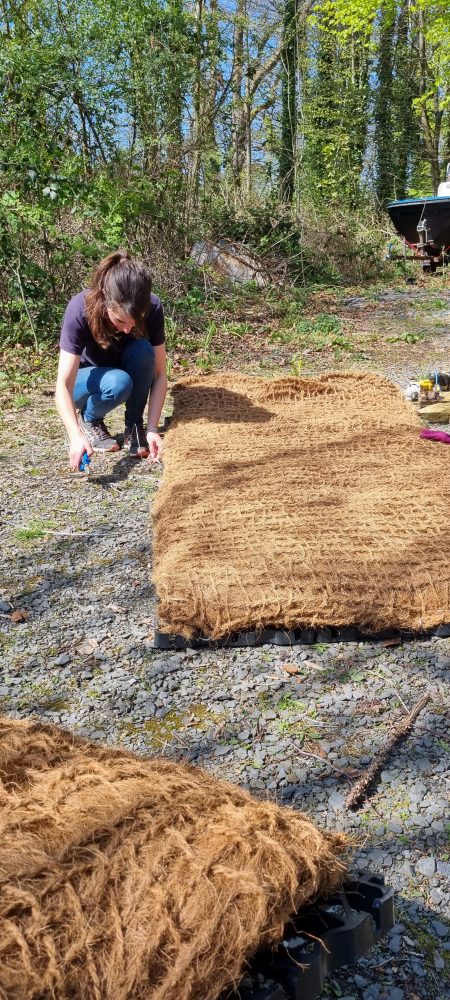
Floating vegetated structures can act as a safe refuge from predation for water fowl such as Great crested Grebes. Additionally, due to the variable depth of Elterwater resulting from storm events that can raise the level of the lake (sometimes by 2 metres) these floating platforms act as an effective nesting site. By floating up on the rising water levels, washing away of nests is prevented meaning a greater rate of brood success for the species using the platforms.
The plants planted into the floating islands grow hydroponically. This means that they grow without soil, allowing a network of roots to develop below the floatation layer. This network of roots has many benefits. It allows nutrients, which are unnaturally high in Elterwater, to be removed and assimilated into the biomass of the plants.
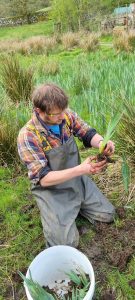
However, this uptake of nutrients is only a small proportion of the effects which tackle eutrophication (the process of nutrient pollution in waterbodies) in Elterwater. A greater effect of nutrient removal is carried out by the biofilms which colonise the huge surface area of the root network. These biofilms are incredibly effective at removing nutrient pollutants such as nitrogen and phosphorus compounds which contribute to the formation of Algal blooms.
As well as providing surface area for the attachment of important biofilms, the root networks provide a wonderful and diverse structure that juvenile fish and invertebrates can use for refuge. Invertebrates may also be attracted to the flowering plants used on the system, such as Iris psuedacorus, or flag Iris and Caltha palustris – Marsh Marigold. One of the more interesting features of using wetland plants on these floating systems is the oxygenating effect they have on the water column. Most wetland plants survive in water logged root conditions due to the presence of Aerenchyma tissues in the roots. These tube like structures transport oxygen to the roots where it is used. However lots of the oxygen leaks out, directly oxygenating the water around it.
The islands are anchored into the bed of the lake with strong steel cable. They were purchased by SCRT from Frog Environmental. Currently 2 of these installations have been added to Elterwater and we are looking forward to seeing the plants grow up and colonise the floating platforms. We will even take some underwater photography to show the development of the root network and bio films, so watch this space.
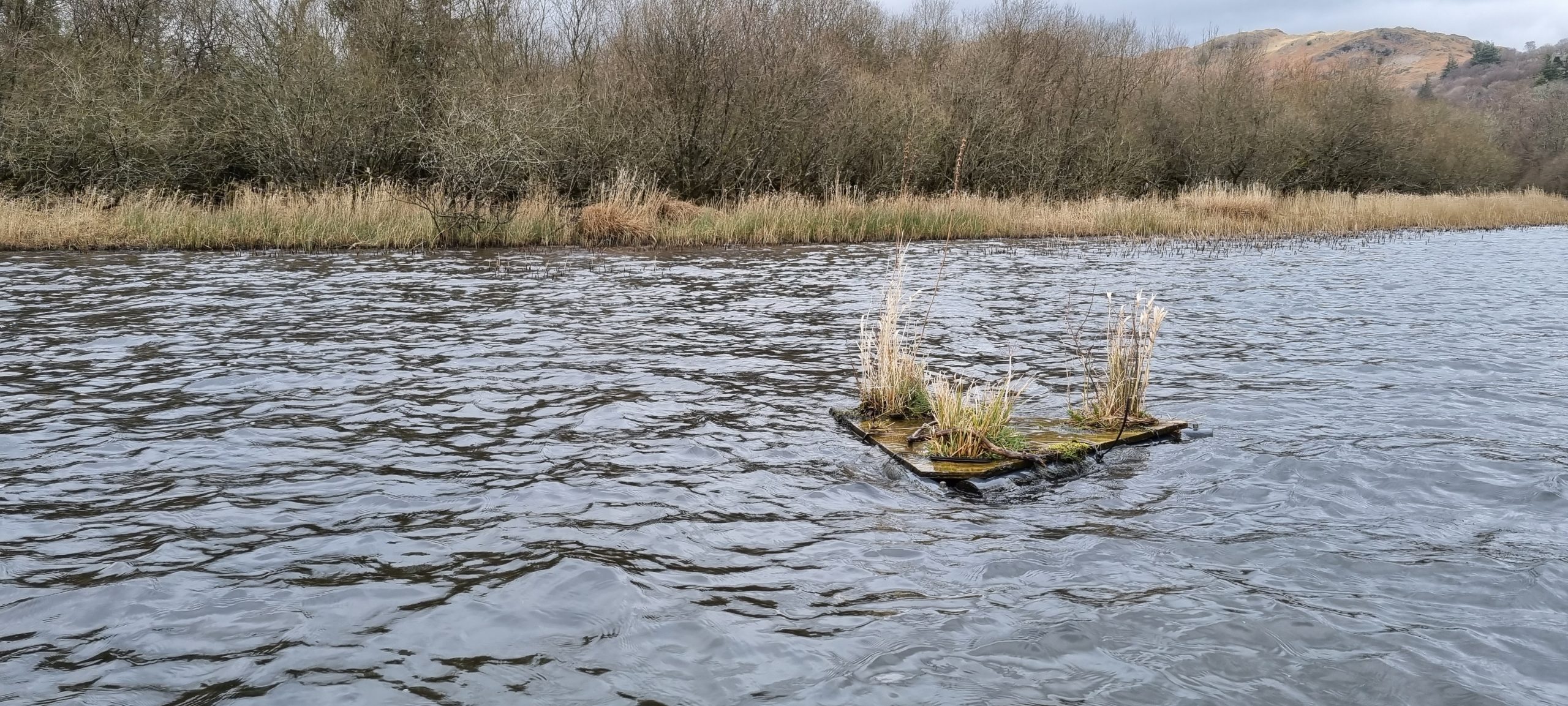
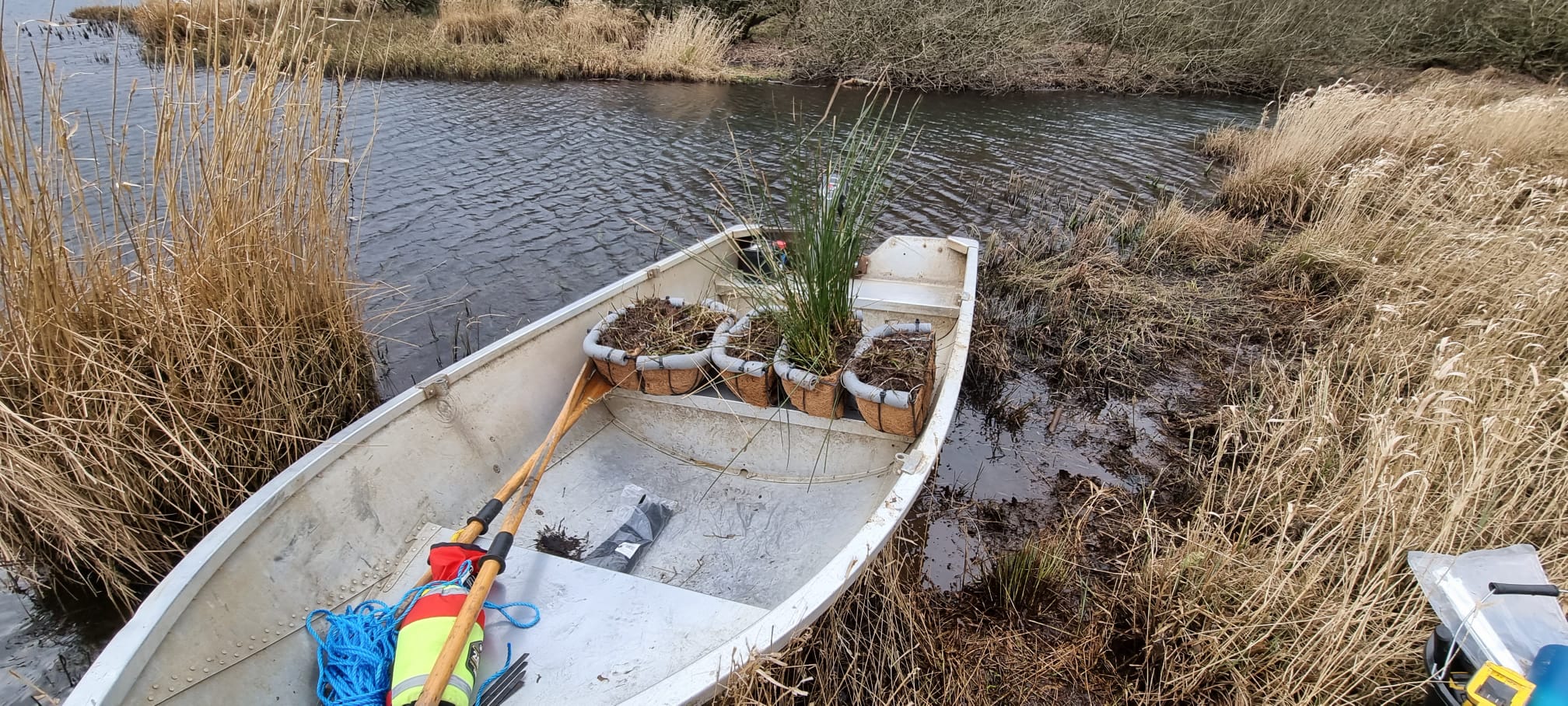
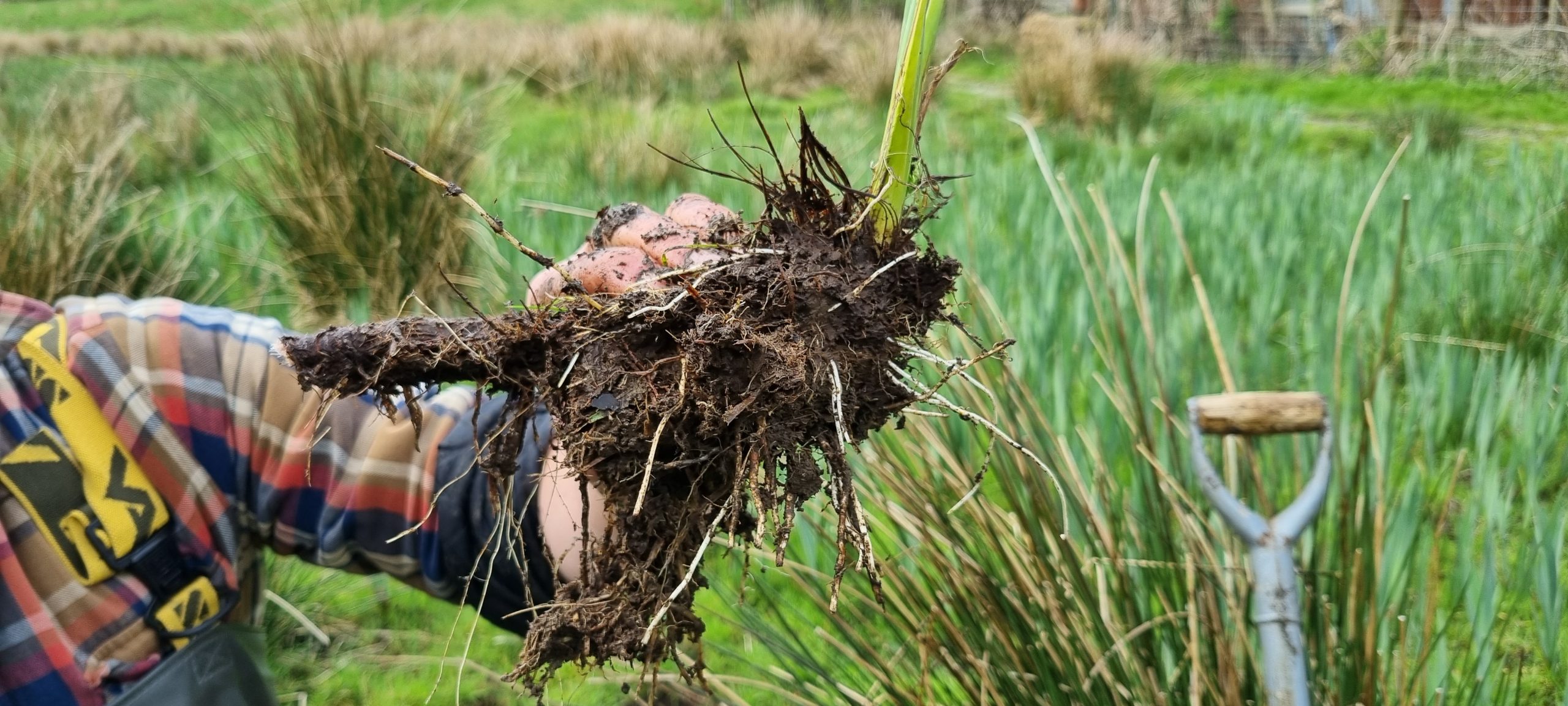
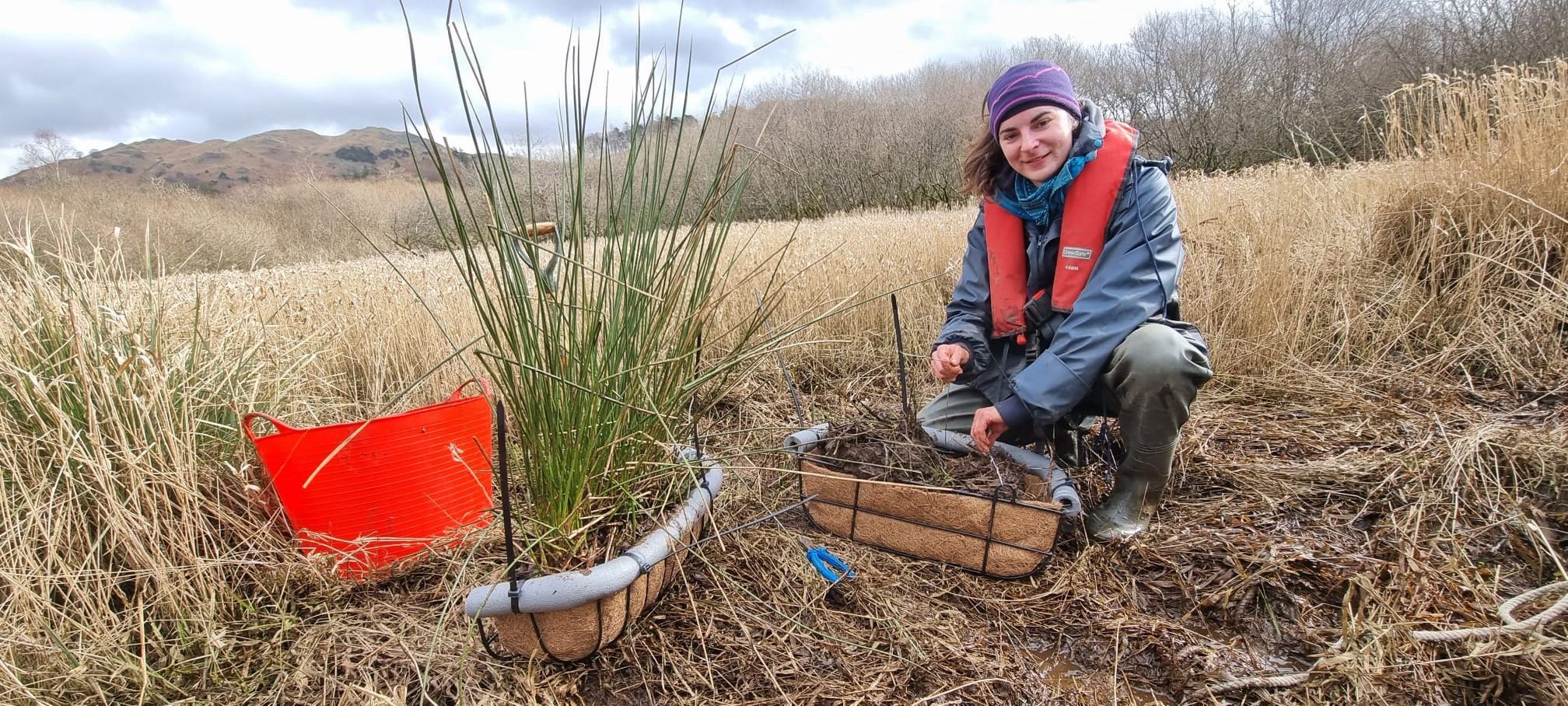
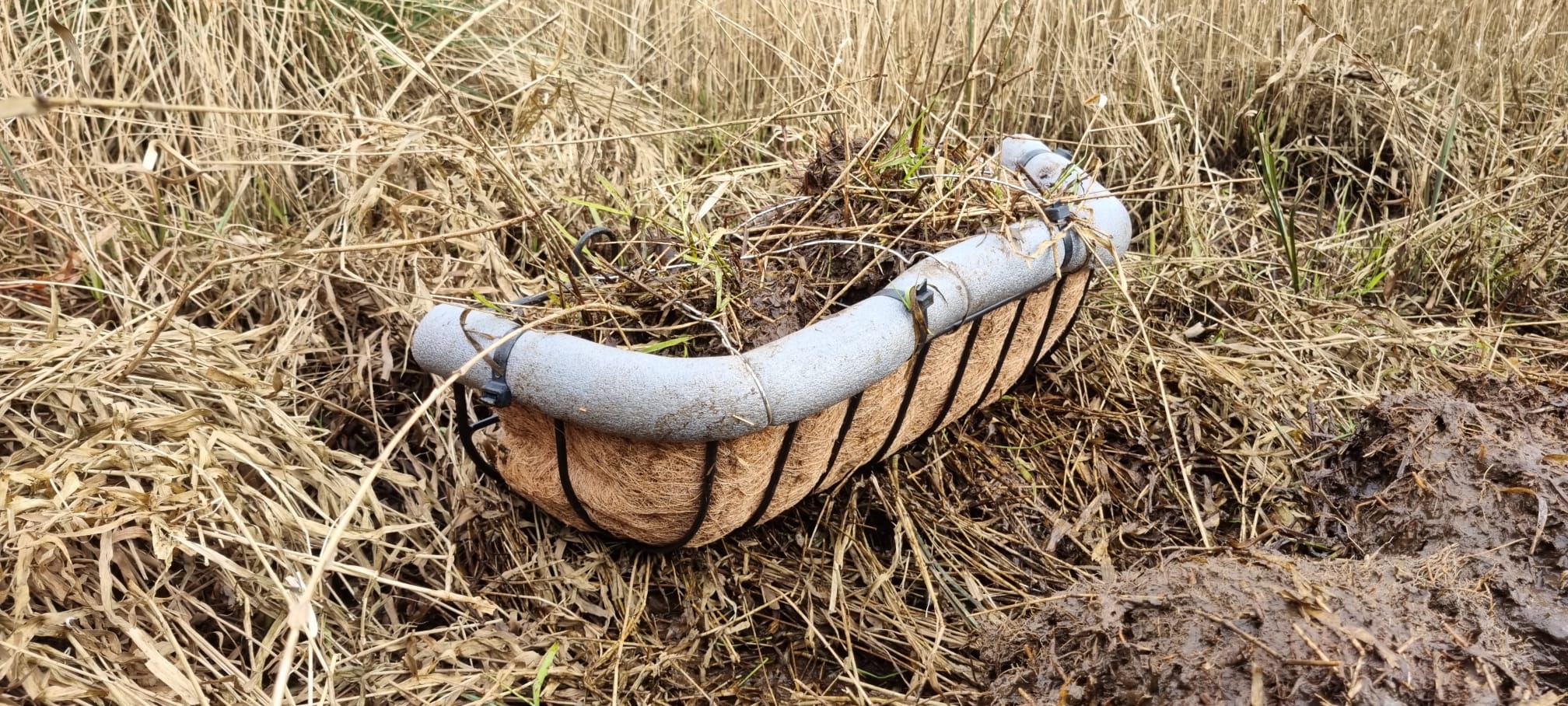
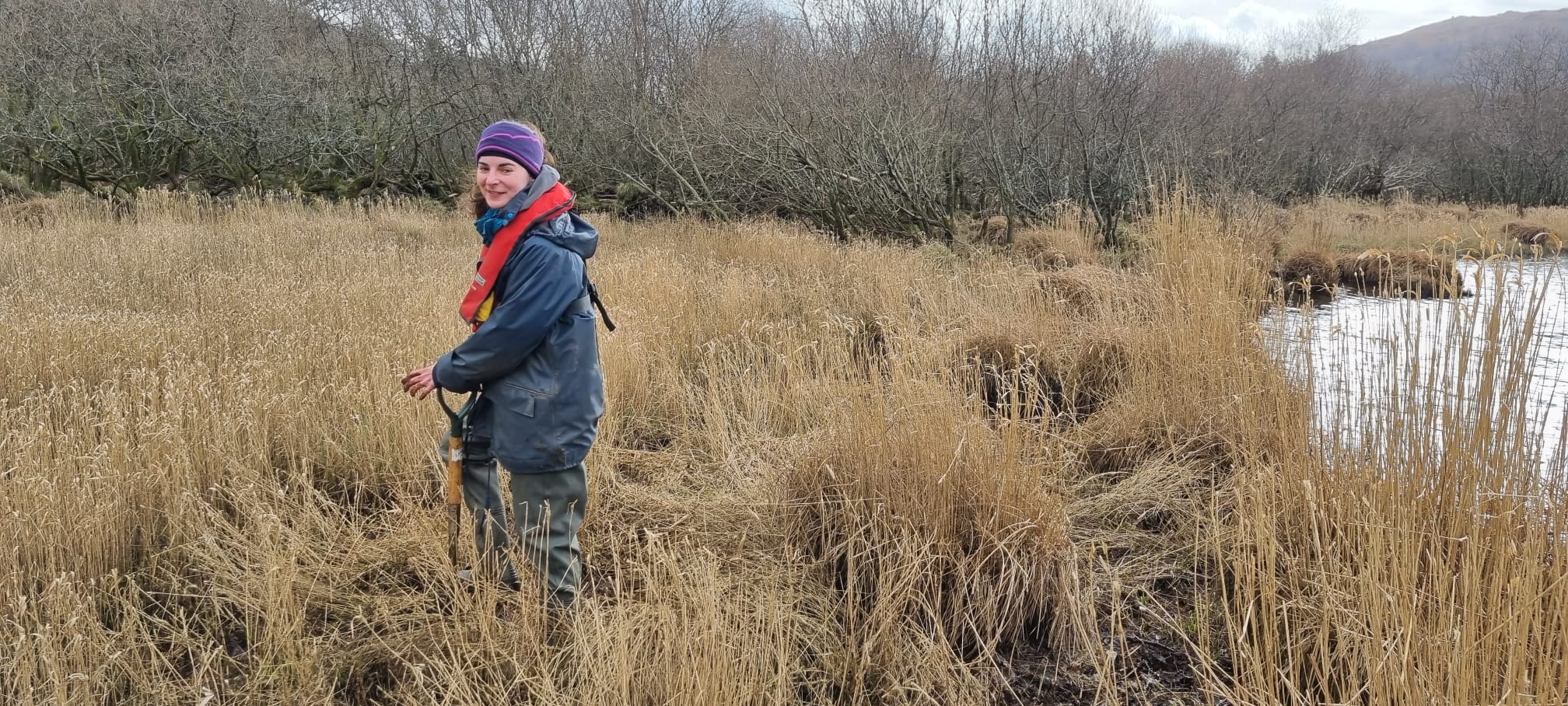
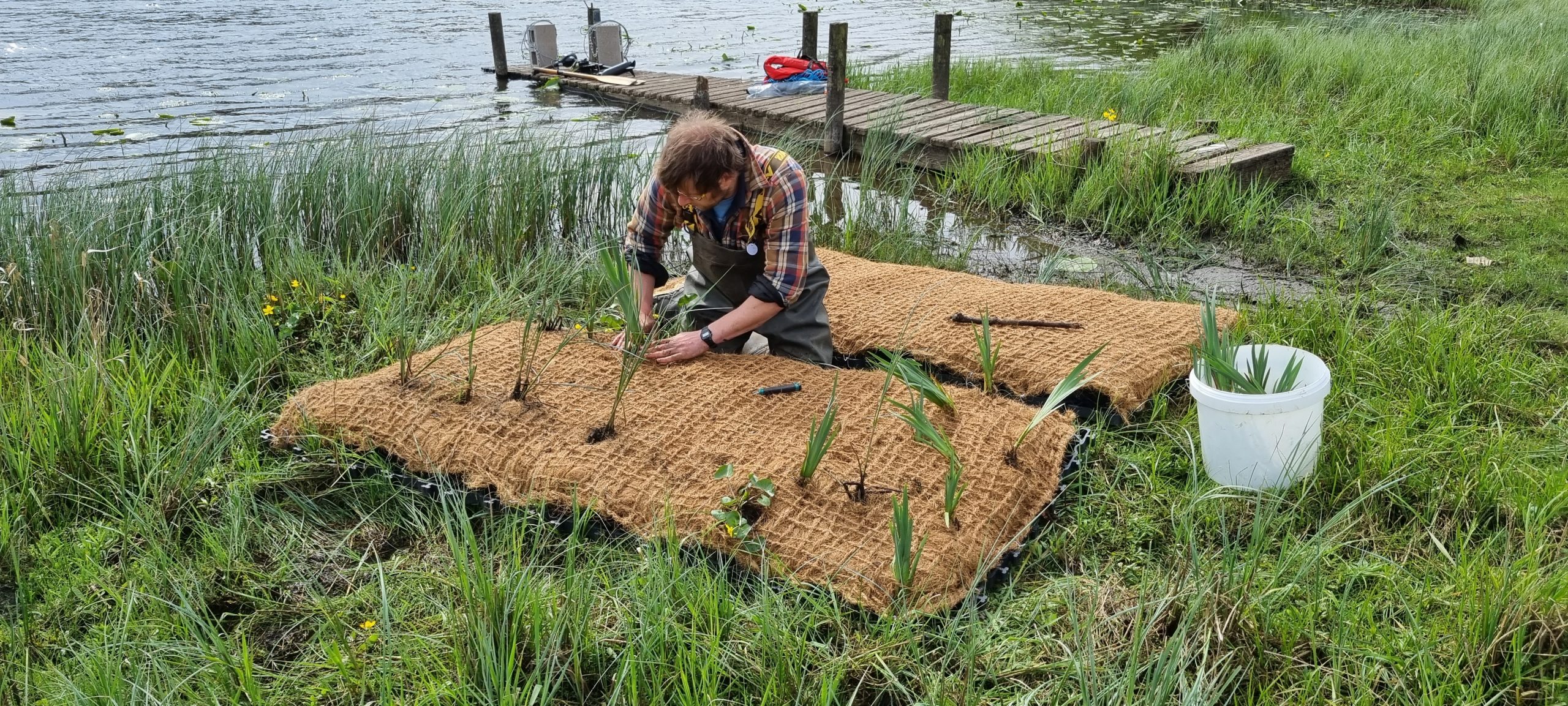
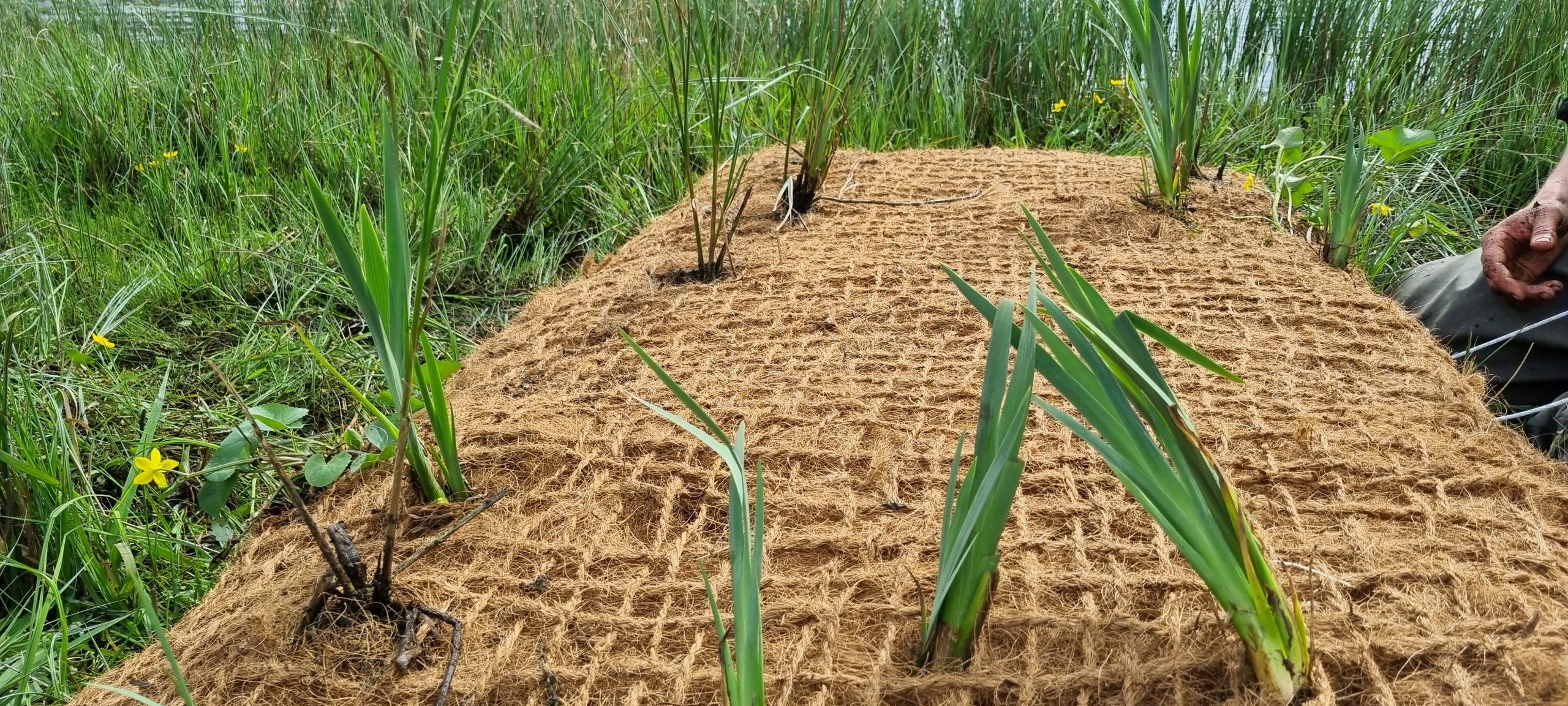
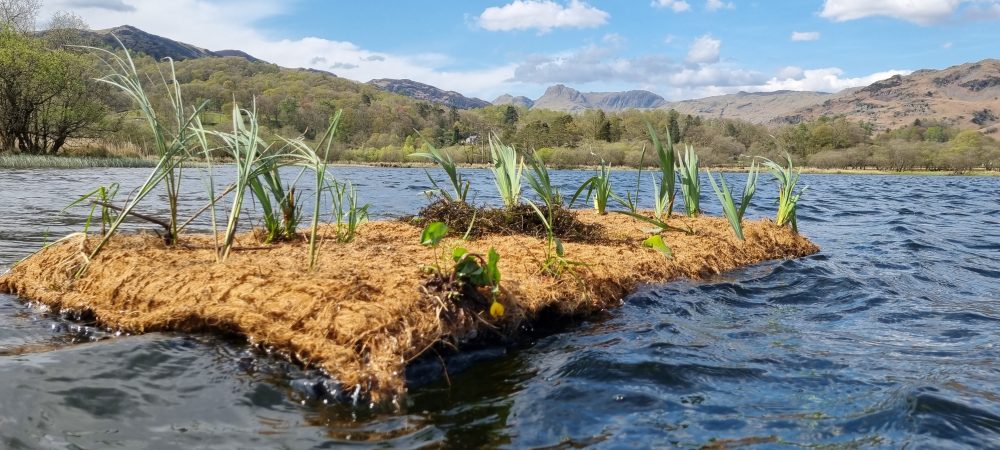

Funding for this project is from the European Agricultural Fund for Rural Development. Europe investing in rural areas.
